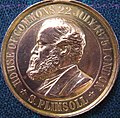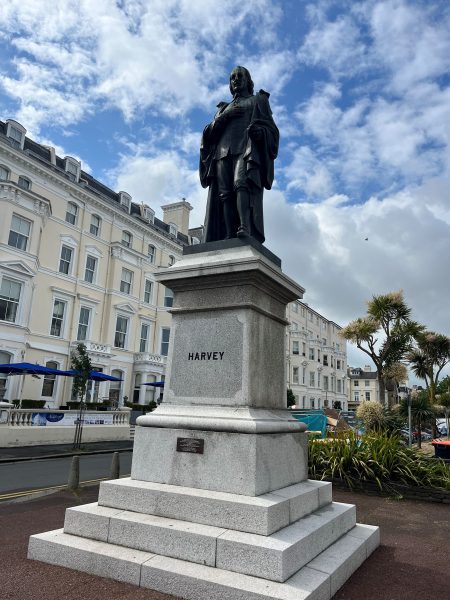FOLKESTONE’S SCIENTIFIC FLAIR!
Folkestone has had many incarnations – from ancient Romans to an 18th century fishing village to Victorian and Edwardian glamour – while today it is home to many businesses using the latest hi-tech across the fields of art and creativity in particular.
Did you know that the town also has historic scientific claims to fame?
THE SAILORS’ SAVIOUR
We’ve all heard of the Plimsoll line – it’s that line on a ship’s hull which indicates the maximum safe draught (depth in the water) and therefore the minimum freeboard (distance from the waterline to the upper deck) for the vessel in various operating conditions.
Politician and social reformer, Samuel Plimsoll came up with the idea – and its introduction in regulation resulted in a reduction in ship sinkings and therefore a significant improvement for the safety of seafarers from the late 19th century onwards.
Known as the “sailor’s friend”, Plimsoll was so revered that for many years Plimsoll Day on 10 February was celebrated in various parts of the UK while 15 towns have streets named after him.
When he died, sailors carried his coffin from his home in Folkestone to the churchyard of St Martin’s in nearby Cheriton as ships in the harbour flew flags at half-mast.
A worthy tribute to a man who was literally the sailors’ saviour.


ALL IN THE BLOOD
On April Fools’ Day 1578 one William Harvey was born in Folkestone.
No fool, Harvey was an influential physician to Royalty, a pioneering medical scientist and the man who discovered how the circulation of our blood works.
Educated in Canterbury, Cambridge, Padua in Italy, Harvey was appointed physician at London’s St Bartholomew’s Hospital. In his work ‘Exercitatio Anatomica de Motu Cordis et Sanguinis’ Harvey expounded his theories on blood circulation and established his name.
Harvey was the first to recognise the full circulation of blood around the human body and to supply the results of experiments that backed up his theories of a complete circuit of veins and arteries. He said: ‘It is absolutely necessary to conclude that the blood is in a state of ceaseless motion; that this is the function which the heart performs by means of its pulse’.
Harvey is celebrated in Folkestone today with the Harvey Grammar School, founded by his family in 1674 “to serve 20 poor boys of Folkestone”, and the nearby hospital in Ashford, Kent, also bears his name. There is also a Grade II listed statue on The Leas.